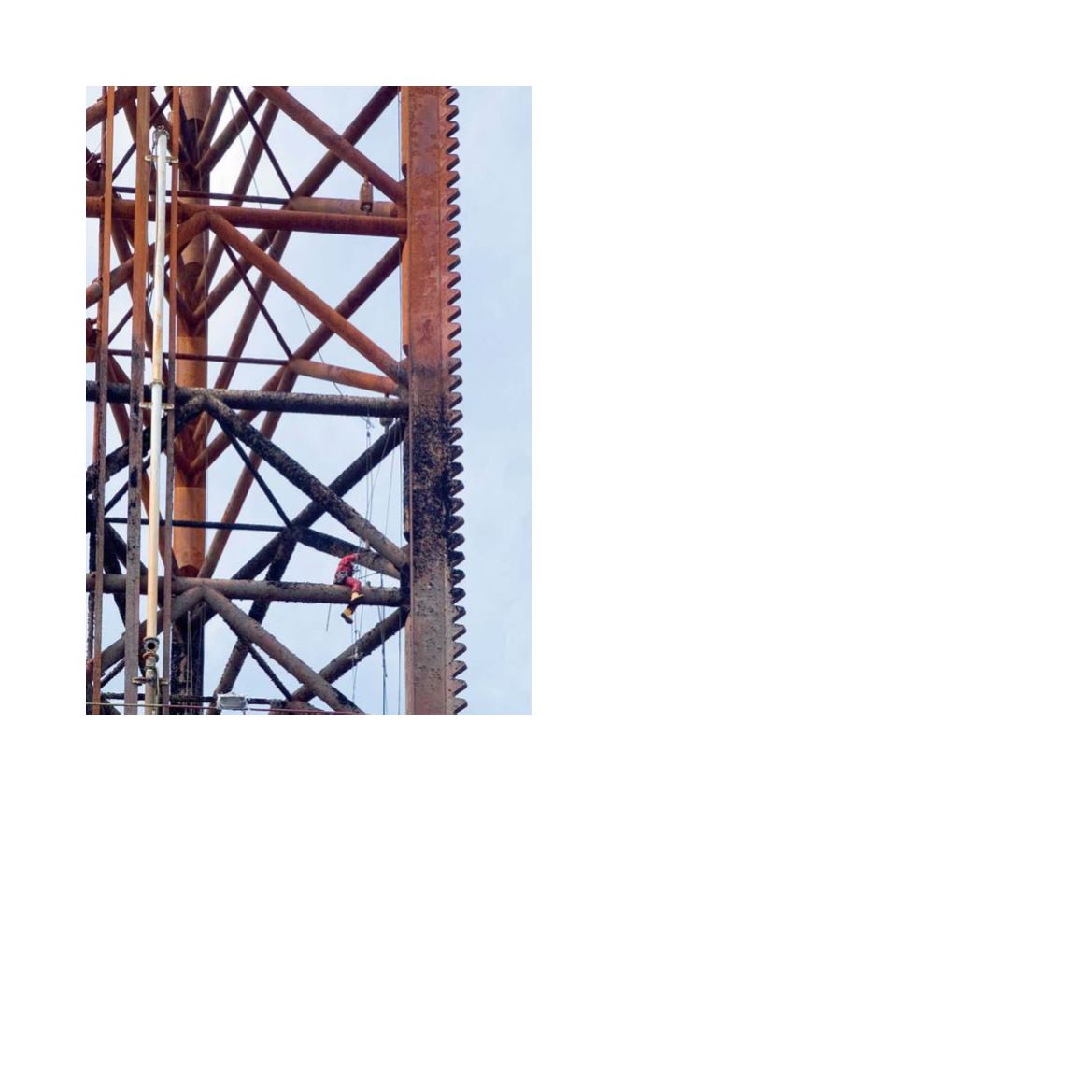
moved, as experience gained from the offshore construc-
tion, operation and maintenance of oil and gas installations
was useful in this context. The Danish wind turbine industry
was beginning to develop in the 1970s and it boomed during
the following decades. Wind energy was originally land-
based, but the construction of offshore wind farms, where
the wind was better exploited, began in the 1990s. Offshore
wind turbines came to the North Sea in the early 2000s, with
Esbjerg Harbour the gateway. In the early 2010s, Esbjerg
had become the world’s biggest harbour for offshore wind
energy which, together with the oil and gas activities, con-
stituted over half the harbour’s total turnover.
The offshore industry considered offshore wind turbines
a good alternative to hydrocarbon extraction from the in-
creasingly mature fields in the Danish North Sea where, in
the 2010s, the time for a change from secondary to tertiary
extraction technology was fast approaching. A second alter-
native was participation in the international offshore market,
where about half of all Esbjerg companies were represented
in the early 2010s. As had been the case with the building
up of a Danish offshore industry, it was also the A.P. Møller
Group that acted herer as catalyst for the internationalisa-
tion of the industry. Mærsk Olie og Gas took to international
offshore activities with a vengeance during the 1990s. The
company had acquired all the requisite knowhow from its
partners in DUC and had become sole operator of the con-
sortium’s activities in the North Sea in 1986, and as a step in
a long-term strategy, the company now went abroad in order
to increase both production and reserves. In 2007, Mærsk
Olie og Gas’s international production was bigger than the
company’s share of DUC’s production, and the company
had become an ever more important contributor to the A.P.
Møller-Mærsk Group’s total business. This was felt later,
when both production and reserves began to drop, and in a
strategy announcement in 2012, A.P. Møller-Mærsk’s top
management advised that investments in oil exploration and
oil projects would be increased significantly in the future.
The global market price for oil has been in steady growth,
with only a few brief downturns since the late 1990s. The
growth was fuelled by an ever more intense battle for raw
materials. However, in 2012 the international energy market
had to start to operate with a scale with two highly diver-
gent scenarios at opposite ends. One scenario was based
on economic growth in some of the world’s most heavily
populated areas, which would continue to put pressure on
oil and gas prices – and another scenario where continued
improvement and increased extraction of shale oil and gas
would affect energy prices negatively. Where on this scale
the future oil price would find itself would be crucial for the
result of the coming years’ stakes and investments.
Detalje af borerig under reparation i Esbjerg, 2005.
29


